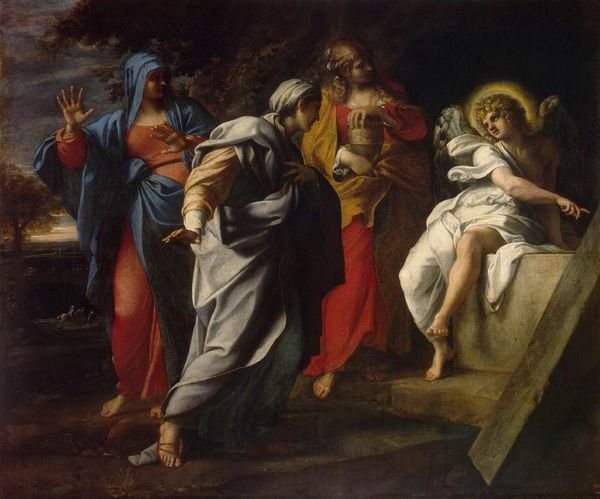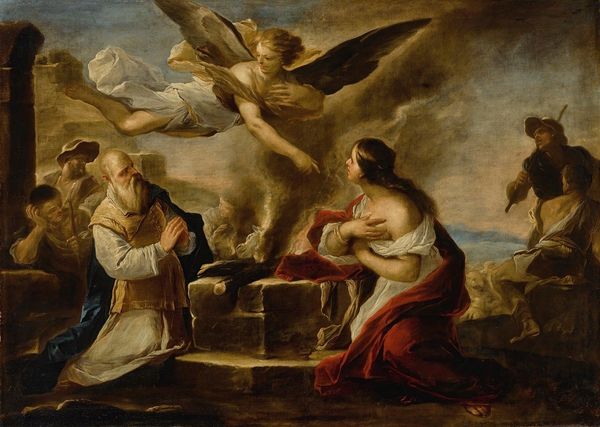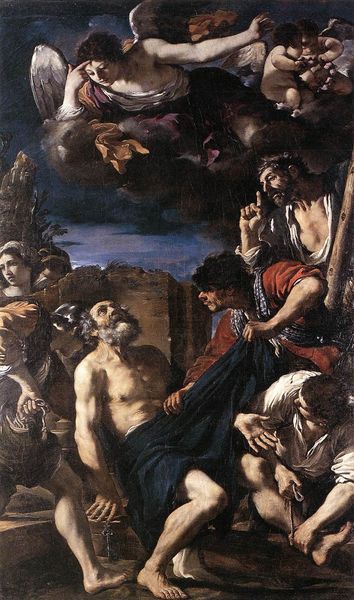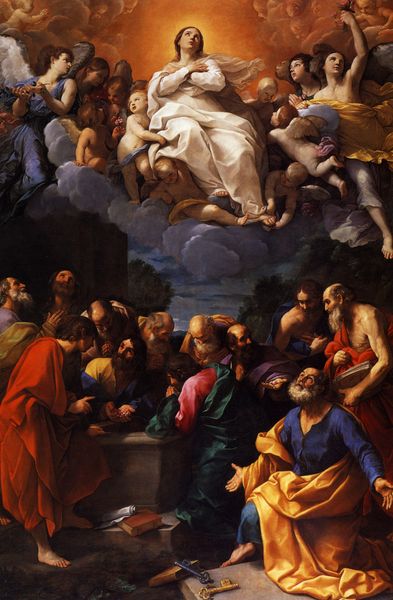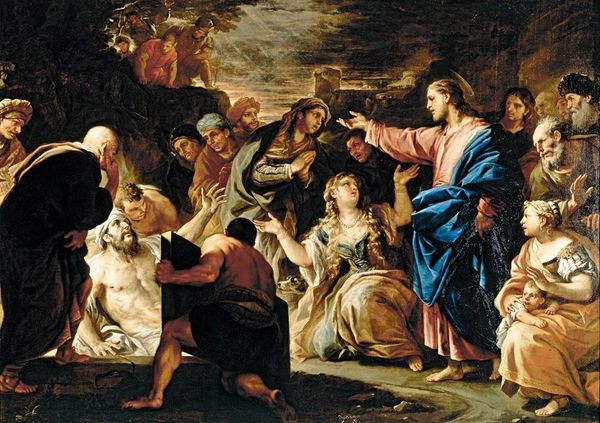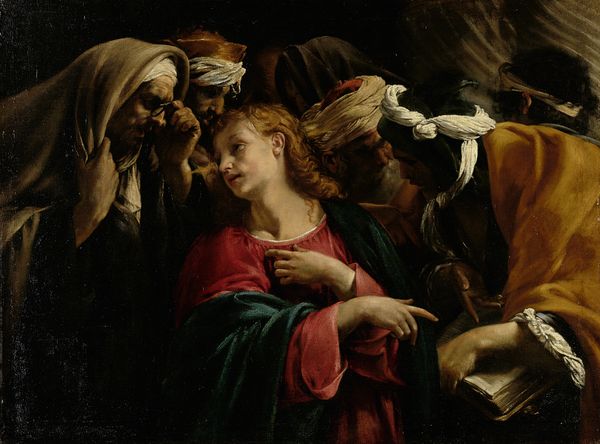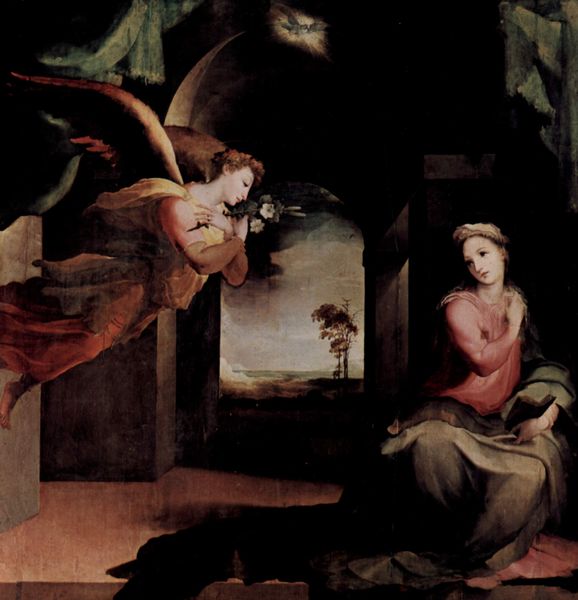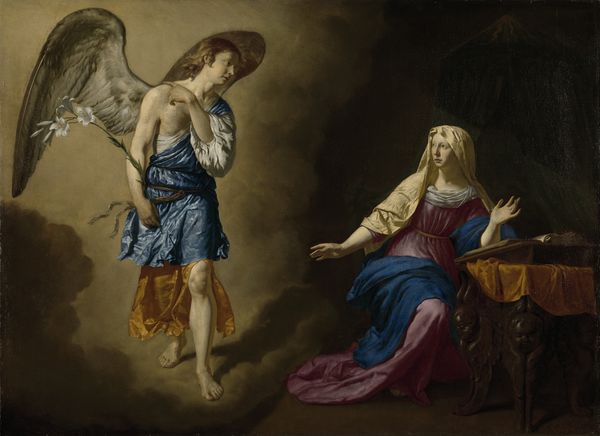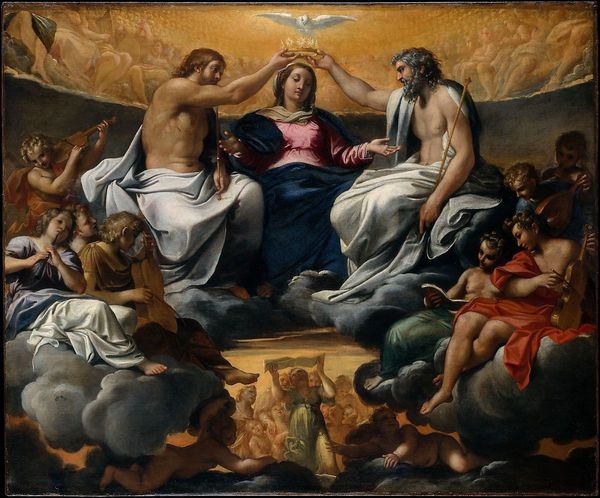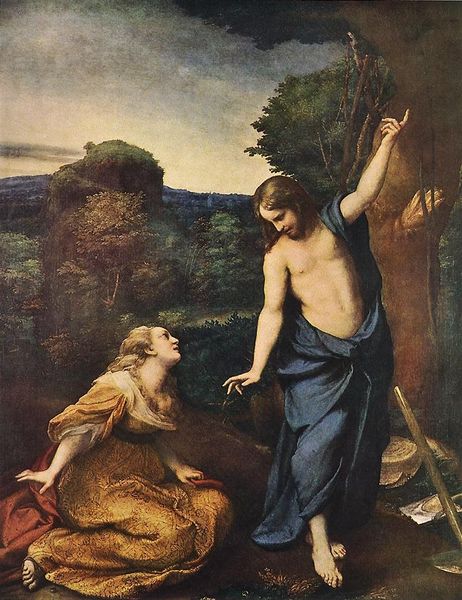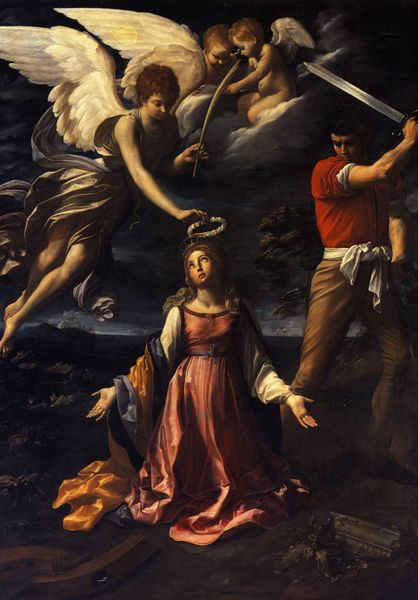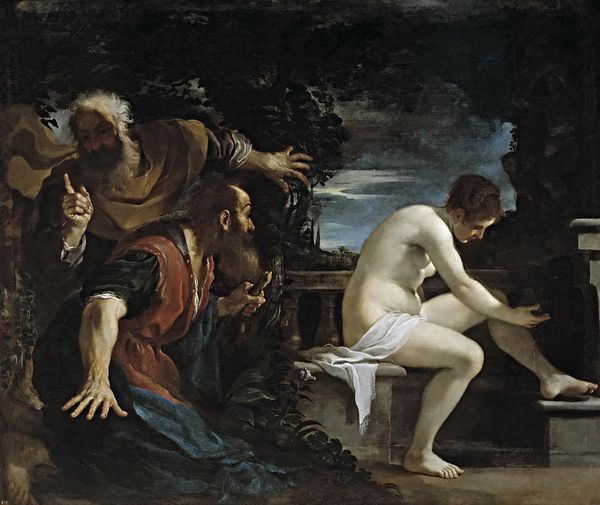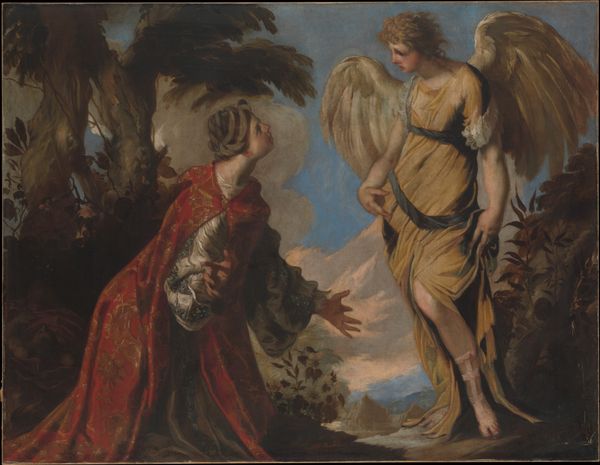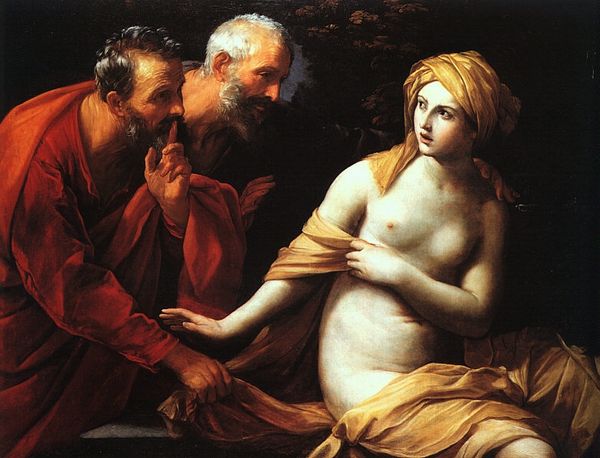
painting, oil-paint
#
portrait
#
baroque
#
painting
#
oil-paint
#
figuration
#
oil painting
#
mythology
#
history-painting
#
portrait art
Copyright: Public domain
Curator: Let’s discuss “Magdalen and Two Angels,” a compelling oil on canvas by Guercino, dating to 1622. Editor: My first impression is one of melancholy. The dark palette and downcast gaze of Magdalen evoke a deep sense of sorrow, almost suffocating. Curator: Observe how Guercino manipulates light. Note the strong chiaroscuro. Light seems to pool around Magdalen's face and hands, emphasizing her emotional state while simultaneously sculpting the forms, creating a sense of volume and drama. Editor: But doesn’t the narrative itself contribute to the sense of melancholy? Here we have a female figure repenting in the wilderness; her traditional attributes are being removed by traditionally masculine figures—which is also a common and questionable symbolic visual construct—the instruments of piety and repentance. Her story, as depicted, still functions within patriarchal constraints even when framed in divine terms. Curator: I appreciate the semiotic reading of the image, seeing how symbols communicate power dynamics, but the angel’s presence is crucial; they aren't simply disrobing her; their gentle expressions signal comfort and divine grace, part of the overall composition. Editor: That said, do we question the role of repentance that has been thrust upon her, and its representation here? It would be interesting to consider the painting’s reception and the potential power the male artist had in portraying a vulnerable female figure repenting. Curator: Such speculations regarding gender roles and power structures certainly warrant our consideration but it must be based on verifiable data. This may influence our perception of the overall aesthetic. Guercino, an accomplished painter in Baroque style, presents dynamic diagonals and carefully constructs an engaging pictorial space in which we get an image. Editor: It's that tension that makes it powerful for me: Guercino's formal mastery clashing with the culturally-loaded theme, pushing us to consider the gaze and agency embedded within this so-called pious scene. Curator: An accurate evaluation that acknowledges its formal qualities whilst considering questions that its thematical framework inspires. A wonderful example that encourages thoughtful investigation for any modern museum goer.
Comments
No comments
Be the first to comment and join the conversation on the ultimate creative platform.
